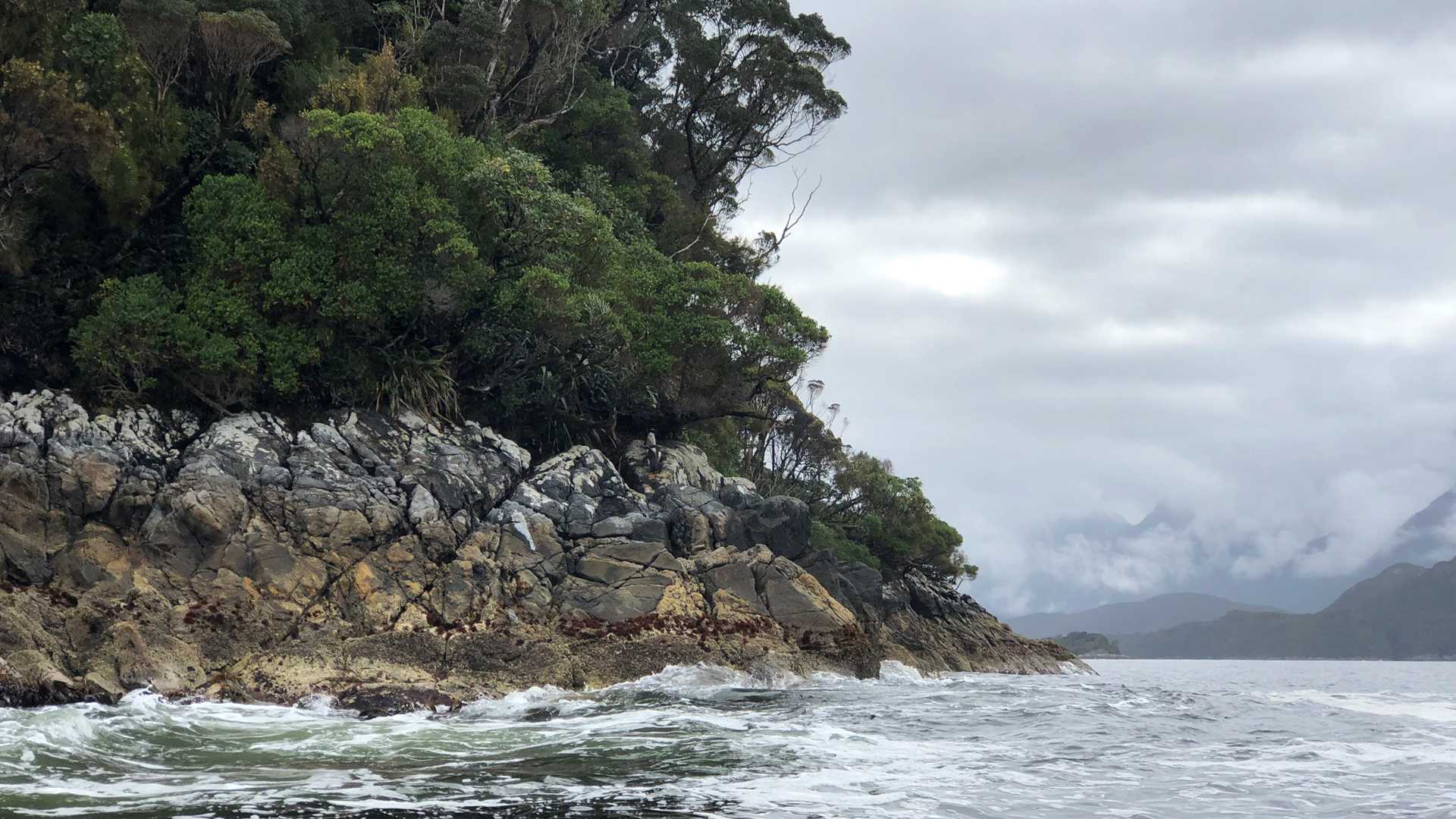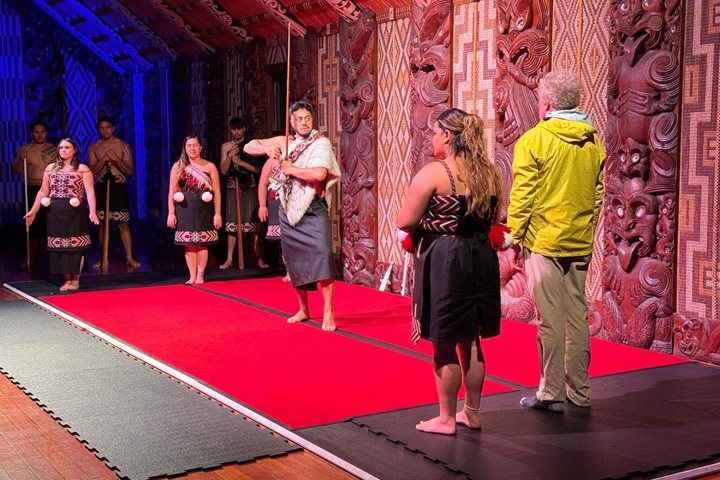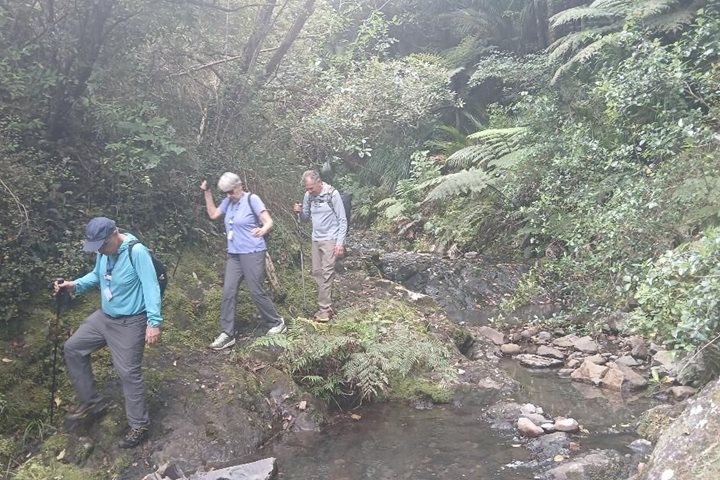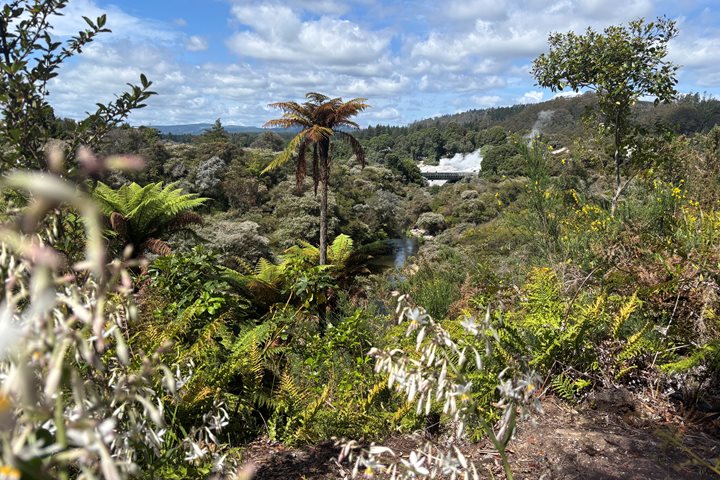Fiordland is the largest national park in New Zealand, and it is included on the World Heritage List. Rain is prominent in this remote wilderness, and the temperate forest is pristine and lush. A morning Zodiac cruise through a fiord led us between granite rocks and steep hills entirely covered with endemic vegetation. The tree daisies stood out. It was not difficult to spot wildlife, including New Zealand fur seals, spotted shags, black-backed gulls, and as a bonus, Fiordland crested penguins. The penguins frolicked in the water or stood around on rocks, wondering about us as we visited their homeland. After this very productive show of species, it was time for an expertly prepared lunch, with an exciting variety like usual. Today’s menu was Mexican. In the meantime, the ship repositioned to nearby Observation Point. Captain Cook spent time here on his second voyage to New Zealand. Our afternoon Zodiac excursion led us to explore the spot, which is commemorated with a plaque. Baby forest trees are prolific, and we saw the rimu trees that Captain Cook used to brew beer. In the afternoon, National Geographic photographer Andrew and our own certified instructor Lauren led a photo session. Everyone had a chance to ask the experts how to improve their photos. As the ship moved north through the fiords in between sheltering islands, the sun came out. What a bonus in an area with plenty of rain! Today was another successful day, and we were able to see a lot of “firsts.”
- Daily Expedition Reports
- 19 Nov 2023
Fiordland National Park, 11/19/2023, National Geographic Orion
- Aboard the National Geographic Orion
- Australia and New Zealand
Share Report
Related Reports
11/14/2024
Read
National Geographic Orion
Great Barrier Island
As we continue north to experience more of New Zealand, we discover more and more beauty at every turn. Today we found National Geographic Orion anchored at Great Barrier Island. We had excursions planned ashore and luckily the weather was cooperating with our activities. In the morning, we were joined by Steve, the main caretaker of Great Barrier Island. He explained the history of the island as well as all the efforts made to preserve and conserve the island, including the eradication of any non-native pests. Morning activities commenced after Steve’s welcome and part of the group went off to a manuka distillery to witness the production of manuka oil. Hikers went ashore to visit the kauri tree forests. Overall, it was a beautiful day with great scenery and good company.
11/13/2024
Read
National Geographic Orion
Rotorua
Guests aboard National Geographic Orion cruised by Whakaari White Island on our way to the Port of Tauranga in New Zealand’s Bay of Plenty. As the ship cruised the coast, guests spotted a number of seabirds, including diving and storm petrels and sooty shearwaters. Once in port, guests ventured inland to Rotorua. Also known as “Sulfur City”, this area is known for its rich Maori culture and unique geothermal hot springs. Guests visited Te Puia, a cultural hub dedicated to preserving Māori traditions. Here, they had the opportunity to engage with local artisans at the arts school, witnessing the intricate craftsmanship of traditional carving and weaving. Participants enjoyed hands-on demonstrations and learned about the significance of these art forms in Māori culture. The day's excursions not only provided breathtaking views and unforgettable experiences but also deepened the guests' understanding of New Zealand's cultural heritage. As the sun set over Tauranga, National Geographic Orion prepared to continue its journey, leaving behind a lasting impression of this remarkable destination.







